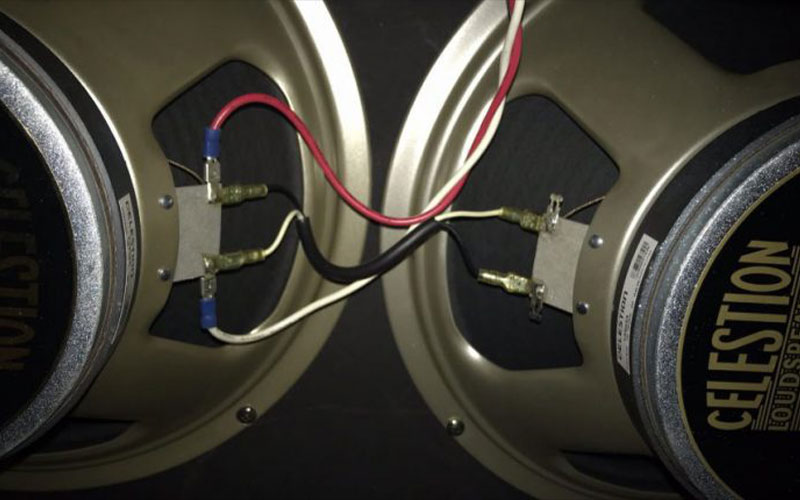
Is it Better to Wire Speakers in Series or Parallel?
Is it Better to Wire Speakers in Series or Parallel? Detailed Informational Guide 2023
When it comes to setting up a speaker system, there are different ways to connect speakers. Two of the most common ways to connect speakers are wiring them in series or in parallel.
Both wiring methods have their advantages and disadvantages, and choosing the right wiring method can significantly impact the sound quality of your speaker system.
In this article, we will explore the differences between wiring speakers in series and parallel, and help you decide which wiring method is better for your specific needs.
Introduction
Before diving into the specifics of wiring speakers in series or parallel, let’s take a moment to understand what these terms mean.
When speakers are wired in series, the positive terminal of one speaker is connected to the negative terminal of the other speaker, and the remaining positive and negative terminals are connected to the amplifier.
In contrast, when speakers are wired in parallel, the positive terminals are connected to each other, as are the negative terminals, before being connected to the amplifier.
The way you choose to wire your speakers can affect the total impedance of your speaker system, which can impact the overall sound quality of your system.

Understanding Series Wiring
Series wiring is the method of connecting speakers one after the other, forming a chain. This wiring method connects the positive terminal of the first speaker to the negative terminal of the second speaker, and so on until all speakers are connected.
The remaining positive and negative terminals of the first and last speakers in the chain are then connected to the amplifier.
Advantages of Series Wiring
The fact that series wiring raises your speaker system’s impedance is one of its key benefits. This might be useful if you need to connect numerous speakers to an amplifier with a constrained output.
By using series wiring, you may avoid overworking the amplifier and protecting both the amplifier and the speakers from harm.
Another benefit of series wiring is that it may be a quick and affordable method to expand your system’s speaker count.
Series wiring might be easier to install because it just needs one wire to connect all of the speakers.
Disadvantages of Series Wiring
The fact that series wiring lowers the overall power output of your speaker system is one of its main drawbacks.
Less power is sent to the speakers because the impedance is raised. As a result, the loudness and overall sound quality may decline.
The entire system may cease to work if only one speaker in the series wiring chain malfunctions.
This can be annoying and expensive since a new or repaired defective speaker will be required.
2. Understanding Parallel Wiring
Parallel wiring is the method of connecting multiple speakers to a single amplifier, with each speaker having its own connection to the amplifier.
This wiring method connects all the positive terminals together, and all the negative terminals together, before being connected to the amplifier.
Advantages of Parallel Wiring
The fact that parallel wiring boosts the overall power output of your speaker system is one of its key benefits.
The power output is raised overall and each speaker’s power delivery is consistent since each speaker has its own connection to the amplifier. Better sound quality and greater levels may come from this.
Another benefit of parallel wiring is that because each speaker is wired separately, the others will still work even if one stops working.
This might be advantageous if you have a lot of speakers in your system since it lowers the possibility of system failure brought on by a single defective speaker.
Disadvantages of Parallel Wiring
The fact that parallel wiring can be more difficult and expensive to install is one of its key drawbacks. Parallel wiring necessitates extra wires and connections because each speaker has its own connection to the amplifier.
This might make the installation procedure messier and raise the system’s price.
The fact that parallel wiring may not be as stable as series wiring is another drawback.
The sound quality of the system may suffer if the impedance of the speakers is not correctly matched, which can lead to an unequal distribution of power.

Differences Between Series and Parallel Wiring
The main difference between series and parallel wiring is the total impedance of the speaker system. Series wiring increases the impedance, while parallel wiring decreases it.
series wiring reduces the power output of the system, while parallel wiring increases it.
When to Use Series Wiring
Series wiring is best used when you have multiple speakers that need to be connected to a single amplifier, and when you want to increase the impedance of your speaker system.
This can be beneficial if you have a low-powered amplifier, or if you want to add additional speakers to your system without overworking your amplifier.
When to Use Parallel Wiring
Parallel wiring is best used when you want to increase the overall power output of your speaker system, or when you have a large number of speakers that need to be connected to a single amplifier.
This wiring method can result in louder volumes and better sound quality, but it can also be more complicated and expensive to install.
Combination Wiring
Combination wiring mixes parallel and series wiring in order to connect speakers.
If you have a complicated speaker system with many speaker kinds or if you want to attain a certain sound quality, this approach might be helpful.
Bi-wiring and Bi-amping
Bi-wiring and bi-amping are methods of connecting speakers that use separate amplifiers or connections for the high and low frequency drivers of the speaker.
These methods can result in better sound quality and improved frequency response, but they can also be more expensive and complicated to install.
FAQs
Q1: Can I mix series and parallel wiring?
Yes, combination wiring is a method of wiring speakers that combines both series and parallel wiring.
Q2: Which wiring method is best for a low-powered amplifier?
Series wiring is best for a low-powered amplifier, as it can prevent damage to both the amplifier and the speakers.
Q3: Can parallel wiring be used for a large number of speakers?
Yes, parallel wiring can be used for a large number of speakers, but it can be more complicated and expensive to install.
Q4: What is bi-wiring and bi-amping?
Bi-wiring and bi-amping are methods of connecting speakers that use separate amplifiers or connections for the high and low frequency drivers of the speaker.
Q5: Can combination wiring improve sound quality?
Yes, combination wiring can be beneficial in achieving a specific sound quality.
Conclusion
When it comes to wiring speakers, there are different methods to choose from, and each method has its own advantages and disadvantages.
Series wiring increases the impedance of your speaker system, while parallel wiring increases the power output. Combination wiring, bi-wiring, and bi-amping are also options that can be beneficial in specific situations.
By understanding the differences between these methods, you can make an informed decision that will result in the best sound quality for your specific needs.
- No Comments
- May 6, 2023
